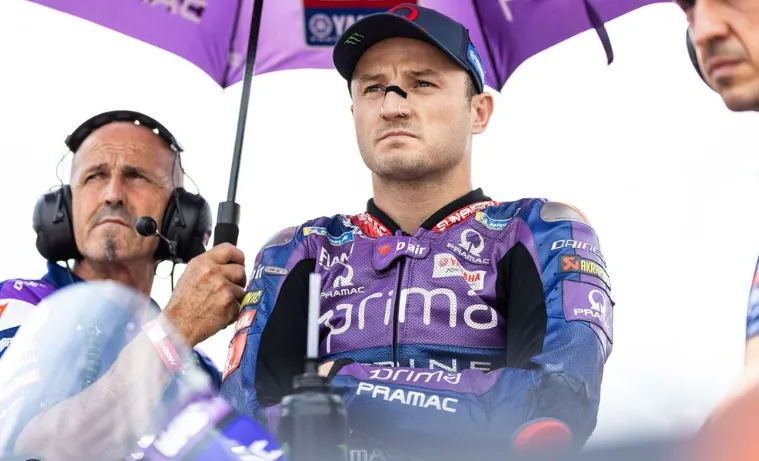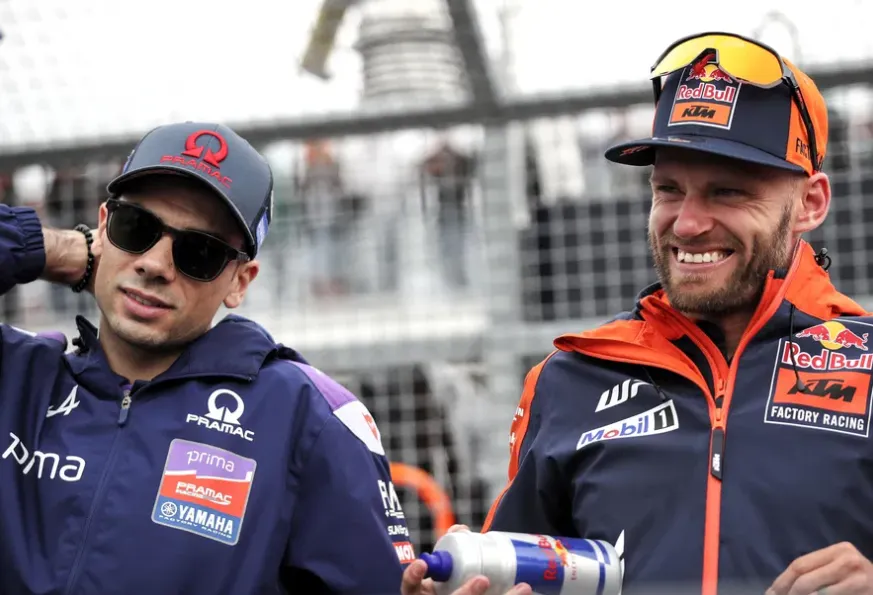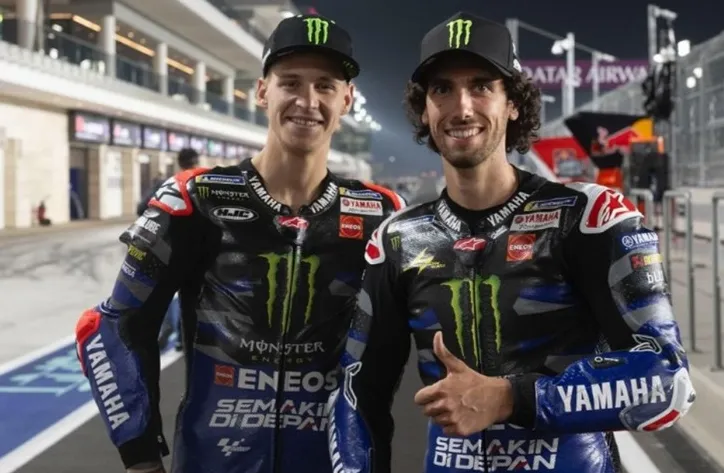
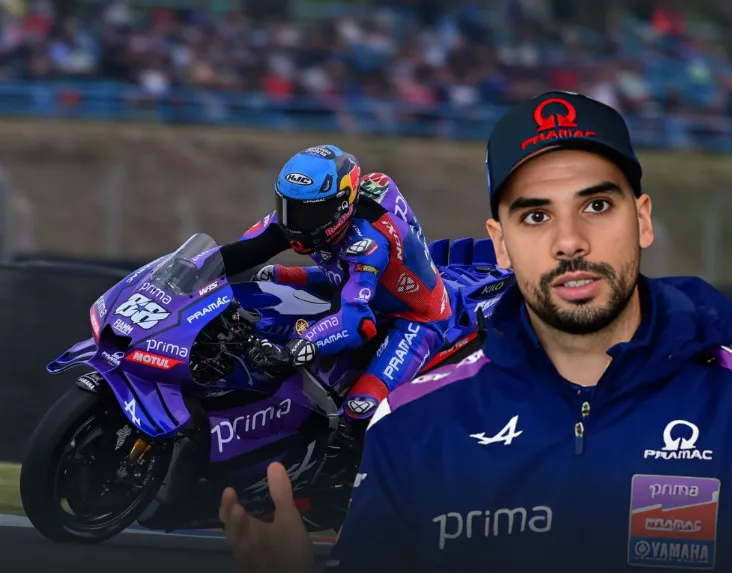
Miguel Oliveira Reveals Challenge with Yamaha M1: ‘The Braking System Is Not Good Enough…’
Miguel Oliveira has never been one to sugarcoat his performance or hide behind vague platitudes. Since making the significant switch to Pramac Yamaha, the Portuguese star has faced the daunting challenge of adapting to the unique characteristics of the Yamaha M1. Now, after multiple races on the Japanese machine, Oliveira has clearly identified braking as his primary area of concern.
“Look. I think right now, I’m missing still the braking, the braking. Not the technique, but the points and… I need to be able to stop the bike better,” Oliveira admitted in a recent media session, delivering a typically honest assessment of where things currently stand in his adaptation process.
His remarks point to more than just discomfort—it’s a signal of where Yamaha and Oliveira need to align their development goals to extract maximum performance in the second half of the season.
Corner Exit Strength Gives Room for Optimism
While braking remains a headache, Oliveira did find a silver lining. One of the defining strengths of the Yamaha M1—its ability to maintain stability and traction during corner exit—is something the Portuguese rider has learned to harness more effectively.
“The corner exit is something that is more or less all the time there, even when I was not 100%,” he noted, acknowledging that the Yamaha’s strong mid-corner and exit behavior plays into his natural style.
This positive attribute has given Oliveira a platform to build on. Even in weekends where he has struggled overall, the ability to accelerate cleanly out of corners remains one of the few consistent advantages. “It’s probably one of the points where I should not be worried about,” he added, a calm admission that certain boxes in the adaptation checklist have indeed been ticked.
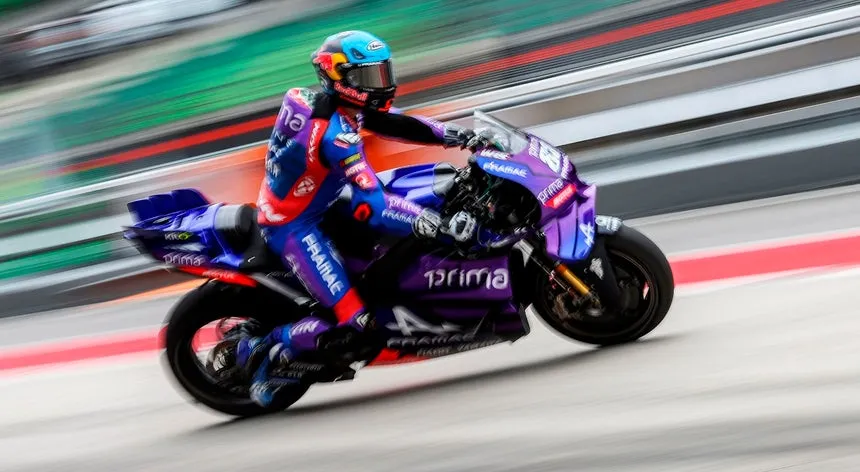
Braking Struggles Reflect Deeper Yamaha Challenges
Braking on the Yamaha M1 has long been a subject of discussion—not just among new riders like Oliveira, but even by seasoned Yamaha campaigners such as Fabio Quartararo. The Japanese bike, known for its stability and flowing cornering, doesn’t always favor aggressive braking styles. This is especially problematic for riders like Oliveira, who previously rode machinery such as KTM and Aprilia, both of which allowed deeper and later braking techniques.
The transition, therefore, is not just about finding the braking markers on a new bike—it’s about completely reprogramming the muscle memory.
“It’s something that still needs to be improved,” Oliveira repeated, reinforcing the fact that this is not a minor detail but a central issue that determines his overall pace and competitiveness.
A Professional Approach to a Methodical Process
Despite the difficulties, Oliveira has approached this challenge with admirable professionalism and clarity. Rather than throwing blame or expressing frustration, the 29-year-old remains focused on analyzing every detail and working methodically with his crew.
That dedication is evident in how he discusses his adaptation—not as a source of panic but as a natural process in top-level racing. He knows the performance curve is rarely linear, especially when jumping into a new bike philosophy mid-career.
The Mentality of Constant Evolution
What stands out most in Oliveira’s reflections is his commitment to constant evolution. His statements don’t carry the weight of excuses—they reflect a champion’s mindset, one that accepts difficulty as part of growth. Oliveira recognizes that braking is not just about the rider, but also about how the bike responds under load, under pressure, and at the limit.
“For sure, the braking, it’s something that still needs to be improved,” he said again, emphasizing that despite progress elsewhere, this singular issue continues to define his level of comfort on the Yamaha.
And yet, he refuses to let it define his season.
Can Oliveira Unlock the Full Potential of the Yamaha?
The question now becomes: Can Miguel Oliveira and Yamaha fix the braking weakness in time to make a significant impact this season? The Pramac Yamaha project is still in its experimental phase, and Oliveira is one of the most critical variables in that experiment.
With a handful of races still ahead and several test sessions expected during the summer break, there’s time to bridge the gap. Whether that improvement comes through chassis tweaks, brake balance adjustments, or even new components, will be down to Yamaha’s engineers and Oliveira’s feedback loop.
It’s worth remembering that Oliveira has been a race winner in MotoGP—and not just once. He’s delivered under pressure, adapted to challenging machinery, and thrived in unpredictable conditions. That pedigree won’t fade just because of one tricky element of bike behavior.
Team Chemistry and the Technical Puzzle
Inside the Pramac Yamaha garage, Oliveira has surrounded himself with a tight-knit crew dedicated to translating his feedback into measurable performance gains. That level of collaboration is crucial for a transition like this. Unlike factory setups that already have years of experience, Oliveira and Pramac are learning Yamaha in real time—and that comes with growing pains.
His statements reflect that understanding. There’s no panic, just precise identification of where improvements are needed. And as he continues to fine-tune braking technique, timing, and confidence, there’s every chance that Oliveira’s results will mirror his rising comfort level.
A Work in Progress Worth Watching
Miguel Oliveira’s Yamaha chapter is far from over—it’s just beginning. The early signs may include some struggles, particularly under braking, but they also show a rider who is in complete control of his learning curve. He’s not hiding behind generic excuses or inflated expectations. He’s communicating openly, identifying strengths and weaknesses, and grinding his way toward becoming a genuine Yamaha threat.
With races at circuits like Silverstone, Misano, and Phillip Island coming up—tracks that could favor Yamaha’s cornering strengths—Oliveira will have ample opportunity to showcase the progress he’s making.
If Yamaha can respond with technical support and Oliveira continues to evolve his braking approach, the partnership might soon become one of the grid’s most unexpected success stories.
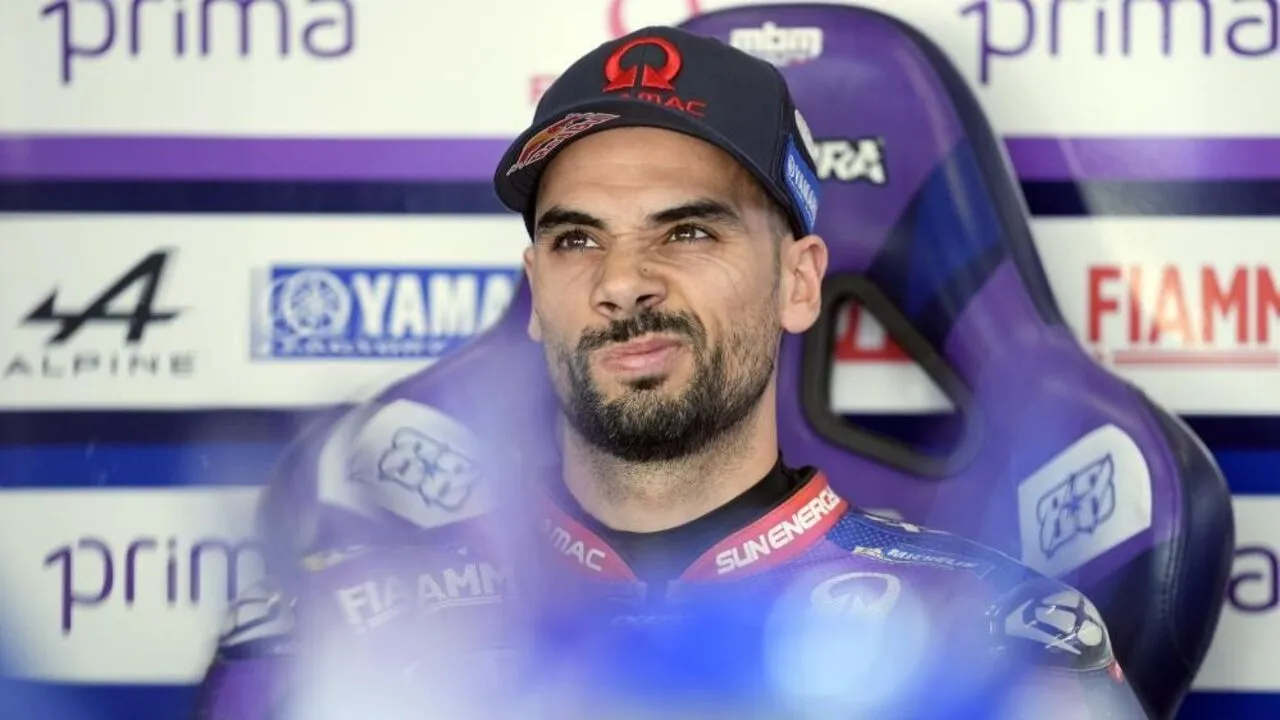
Conclusion: Braking the Barrier, Building Momentum
In the high-stakes world of MotoGP, small weaknesses can be race-defining—but so can small improvements. Miguel Oliveira’s current challenge with braking is more than just a technical issue; it’s a test of adaptability, resilience, and patience.
With a sharp mind, honest self-assessment, and relentless professionalism, Oliveira is not far from turning this corner—both literally and figuratively. The work is ongoing, the goals are clear, and the attitude is exactly where it needs to be.
As he continues his adaptation to the Yamaha M1, fans and rivals alike would be wise not to count out Portugal’s top MotoGP talent. Once he solves the braking puzzle, Miguel Oliveira will be back in the fight.








